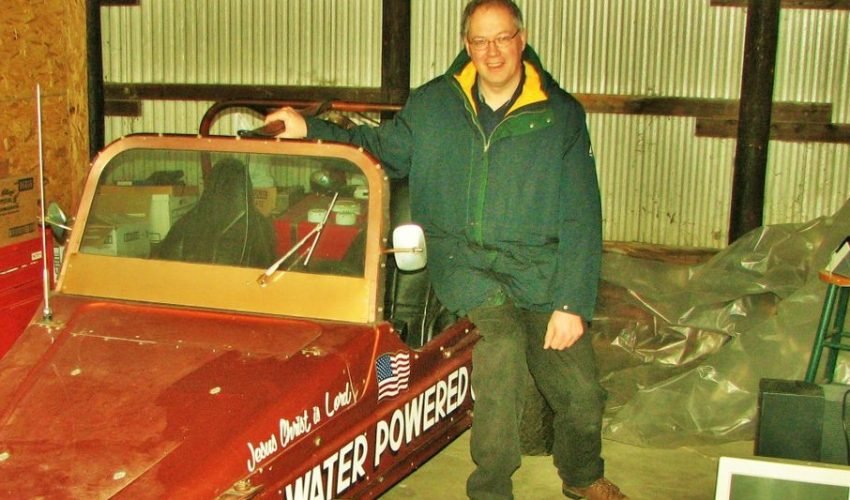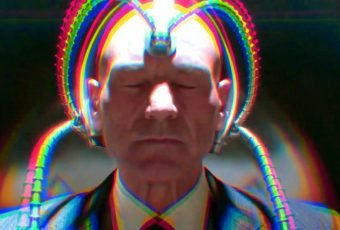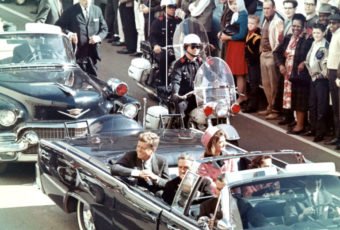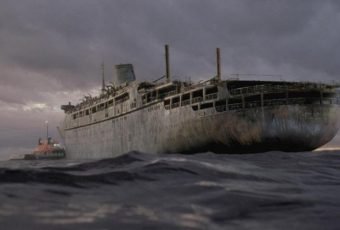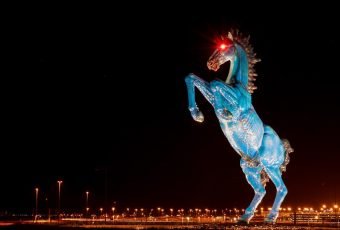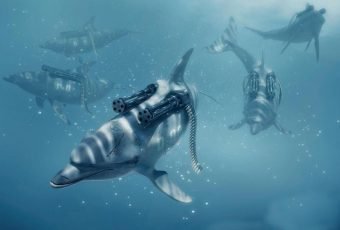Stanley Allen Meyer was an American inventor who claimed to have invented an automobile that could run solely on water. Meyer’s water-fueled car gained media attention in the 1980s and 1990s, but his sudden death in 1998 sparked conspiracies about whether his technology was suppressed.
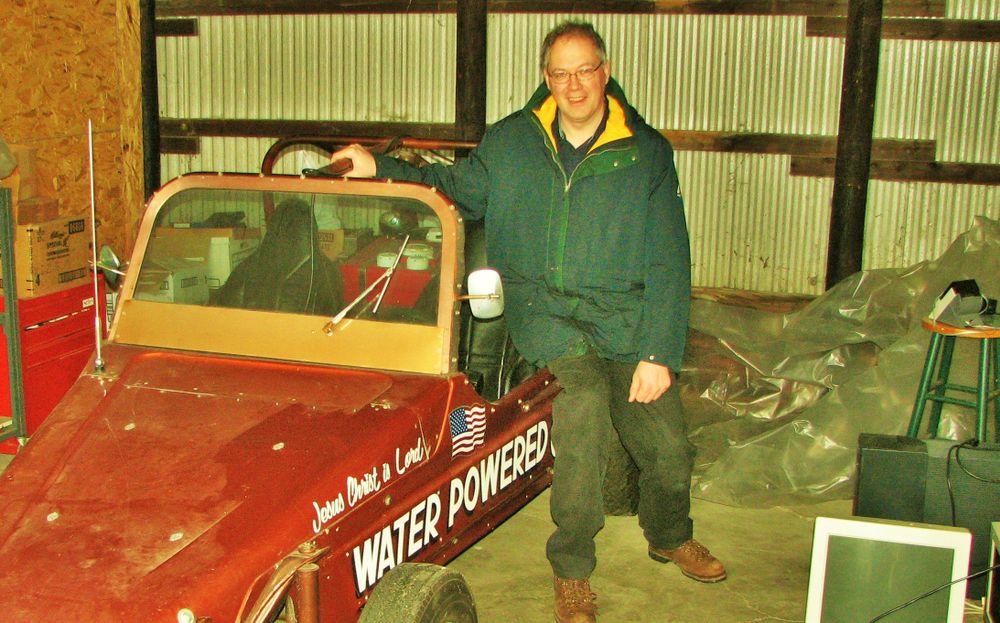
The first commercial hydrogen-fuel cell car came out in 2015 which was manufactured by Hyundai.
But, here is the catch; In the year 1990, an American named Stanley Allen Meyer claimed to invent a water-fueled cell technology that Meyer said could be used in cars so that gasoline fuel would no longer be required.
Stanley Meyer’s Background
Stanley Meyer was born in 1940 in Columbus, Ohio. He was a high school dropout who spent years self-educating and working odd jobs before finding success as an inventor.
In the 1970s, Meyer set up a company called Meyer Technologies to develop technologies related to hydrogen and oxygen production. This research eventually led him to the idea of using water as a fuel source.
Meyer was not a trained scientist or engineer. His unconventional background likely contributed to the scepticism he faced from experts regarding his water fuel cell claims. However, Meyer was determined and devoted years to developing and promoting his water-powered car.
Stanley Meyer’s Water Car
In the year 1975, when Saudi Arabia was cutting off its oil supply to the United States, oil prices drastically increased and the U.S. was running out of oil. This all resulted in many corporations going bankrupt or losing money. Demand for new cars dropped almost to zero, something had to be done quickly.
Stanley Mayer then decided to develop a car of his own that would revolutionize the entire automobile industry and end up U.S. oil crises.
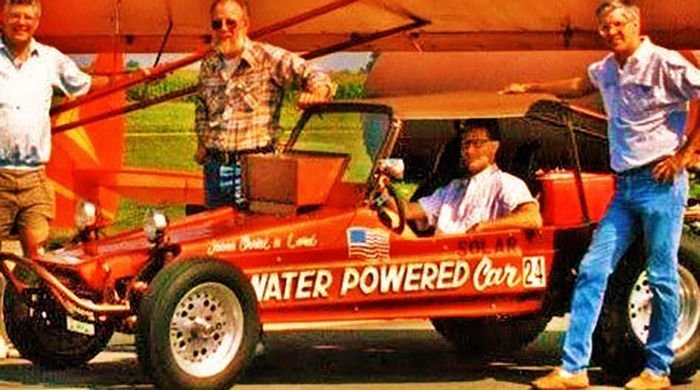
In an interview, Meyer said, “It became imperative that we must try to bring in an alternative fuel source and do it very quickly”. He knew an alternative fuel had to be developed to save the U.S. from running out of oil and the automobile industries going bankrupt which was keeping an entire economy on wheels.
Meyer claimed to have invented an electric car powered solely by water. His technology involved an energy generator that was able to split water into its component elements, hydrogen and oxygen, through a process called electrolysis.
The resulting hydrogen and oxygen gas would then be fed into the vehicle’s engine and ignited, creating combustion to power the car. The only byproduct from this reaction is water, meaning the car’s exhaust would simply be clean steam. Essentially, Meyer maintained he had found a way to extract large amounts of energy from water.
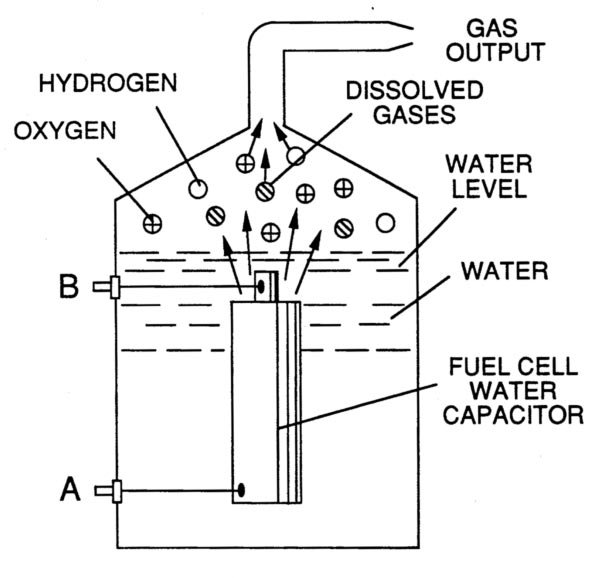
However, the claim that the fuel cell could recombine the hydrogen and oxygen atoms back into water molecules was scientifically impossible according to experts. This raised major questions about whether the technology actually worked as described.
Meyer’s Water-Powered Dune Buggy
In 1996, Meyer demonstrated his water-powered dune buggy to the media in Washington D.C. The dune buggy was claimed to run on water alone, powered by an array of Meyer’s water fuel cells.
During the demonstration, Meyer drove the dune buggy for over 10 minutes around the Capitol Building and the Washington Monument, reaching speeds of up to 40 miles per hour. Meyer said the buggy could reach speeds over 100 miles per hour.
This highly-publicized demo was touted as proof that Meyer’s water fuel cell technology actually worked. Skeptics continued to insist his devices violated the laws of physics, but Meyer insisted all of his innovations were within the realm of established science.
However, there was limited evidence the car actually ran on water alone. No clear videos were available showing it in motion without external power sources. This raised doubts about whether the demo was legitimate.
The Mysterious Death of Stanley Meyer
In March 1998, Stanley Meyer’s controversial career came to an abrupt end under suspicious circumstances.
While dining with his brother and potential investors, Meyer suddenly shouted he’d been poisoned before stumbling outside and collapsing to his death from a cerebral aneurysm.
Meyer’s shocking demise sparked immediate conspiracy theories that he was silenced before his water fuel technology could upend the oil industry. Several strange details fueled these sinister speculations:
- Meyer was on the cusp of a major deal with Belgian investors who showed no sympathy after his death.
- Weeks prior, a fearful Meyer claimed he was being harassed to turn over his designs or face consequences.
- Meyer had mused publicly he might not “see the end of the century” as forces sought to steal his inventions.
- Despite no prior health issues, the coroner delayed months before concluding the cause of death, stoking coverup rumours.
- A posthumous documentary bolstered claims his technologies actually worked despite the doubtful scientific premise.
- Meyer’s brother implicated the Belgian investors as having knowledge of what transpired.
While official sources declared his death natural causes, the conspicuous timing and circumstances left many unconvinced. To hopeful dreamers, it appeared sinister forces had murdered Meyer before his revolutionary water-powered car could debut.
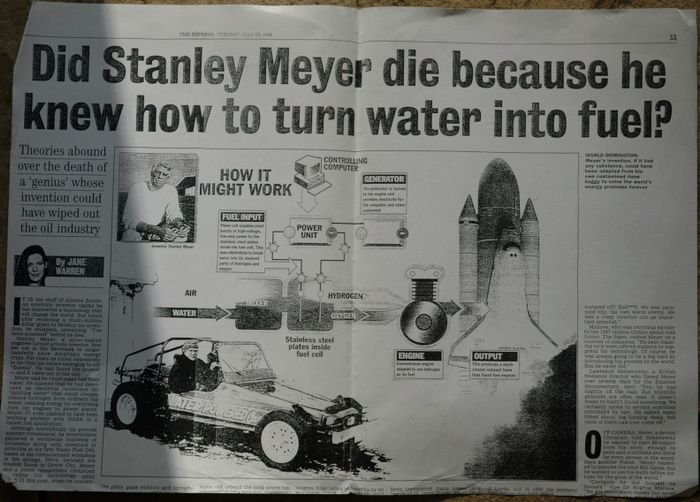
Sceptics argue the lack of viable prototypes means Meyer’s demise changed nothing. But the mystery surrounding his abrupt passing ensures his story remains clouded in uncertainty.
Stanley Meyer’s controversial life ended just as his ambitions were peaking. With his grand visions unfinished and his secrets entombed along with him, we can only speculate whether his inventions could have delivered on their promise.
The unanswered questions lingering decades later stand as a cautionary warning to others tempted to challenge the status quo. Meyer’s suspicious death shows that idealism and ambition sometimes come with grave consequences when the stakes are high enough.
Meyer’s Legacy and Impact on Water as Fuel Research
Though Stanley Meyer did not live to see his vision of a water-powered car become a reality, his highly publicized claims helped stimulate ongoing research into using water as an energy source.
For example, scientists have continued working to extract the hydrogen in water via electrolysis to use that hydrogen as a clean fuel. While no one has replicated Meyer’s specific claimed achievements, he did help inspire new energy research directions focused on water’s untapped potential as a fuel.
Meyer also helped popularize concepts like hydrogen fuel cells, electrolysis, and using water as an energy carrier that later gained mainstream recognition from companies like Honda and Toyota. So while his specific “water-powered car” remains controversial, Meyer did point transportation research towards innovative fuel alternatives.
Even though Stanley Meyer’s sudden death stalled his own work, the mystique surrounding his unproven water-powered car continues to captivate dreamers. Meyer made bold claims that many experts consider physically impossible, yet he took his quest quite seriously.
Though it seems highly unlikely his exact inventions will ever materialize, Meyer’s vision for water as a fuel source was ahead of its time. Much research remains to be done unlocking the full potential of hydrogen and fuel cells. Stanley Meyer may be long gone, but his dream for water-powered cars lives on.
If successfully developed, water-powered cars could have significant environmental benefits by reducing harmful emissions, aiding in the fight against climate change, and achieving global temperature targets. While the feasibility of Meyer’s specific technology is debated, the legacy of his unconventional thinking may still contribute to innovative transportation solutions in the future.
How Was Meyer’s Water-Fueled Car Supposed to Work?
At the heart of Meyer’s design was electrolysis – using electricity to split water into its components, hydrogen and oxygen. The gases produced would then fuel the car’s engine, generating power through combustion.
The system incorporated an electrolysis “fuel cell” to break water molecules down into their elements. So in theory, tapping into the power hidden in water allowed the car to keep producing energy as long as water was supplied.
But was this technology science or science fiction?
Could This Concept Really Power a Car?
Many experts cast doubt that Meyer’s system could work as claimed. The controversy hinged on his fuel cell supposedly yielding far more energy than required to split the water.
Known physics implies that 100% efficiency is the absolute limit for converting energy from hydrogen and oxygen combustion. Yet Meyer insisted his fuel cell could break this rule via a vague “resonance” effect.
Without concrete evidence that Meyer’s resonance principle actually enabled extracting surplus energy from water, most remain sceptical that his setup could produce meaningful real-world results.
How Did Meyer’s Design Differ From Conventional Cars?
Aside from its questionable fuel cell, Meyer’s overall system did incorporate basic auto engineering:
- Using electrolysis to separate water into hydrogen and oxygen gases
- Feeding the gases into an internal combustion engine
- Combusting the gases to transmit power through drive shafts and wheels
However, his engine designs were modified for hydrogen and oxygen instead of gasoline. And the car emitted only clean water vapour rather than toxic fumes.
So while the foundation resembled existing systems, the unconventional power source made Meyer’s water car unique.
Will We Ever See Functional Water Cars?
The futures of hydrogen fuel cells and electrolysis remain bright. But reproducing exactly what Meyer claimed has proven difficult since his death.
It’s unclear whether he simply faked demos or engineered something ahead of its time. Without him around to share secrets, the mystery lingers.
While his specific systems stay controversial, Meyer did help inspire fresh thinking on using water as fuel. Some even hope to one day make his vision a reality. But for now, that dream remains elusive.
Though water cars face hurdles, imaginative inventors like Meyer drive progress. Each radical idea brings us one step closer to cleaner transportation solutions. The true legacy of Stanley’s work may be revitalizing how we imagine future tech innovations.
So could a car really run on water alone? Perhaps one day we’ll know for sure.
Now since you have read about Stanley Meyer’s Conspiracy, read about Deep Dark Secrets of Abandoned Hashima Island. You might also like reading about America’s Creepiest TV Hack incident.
